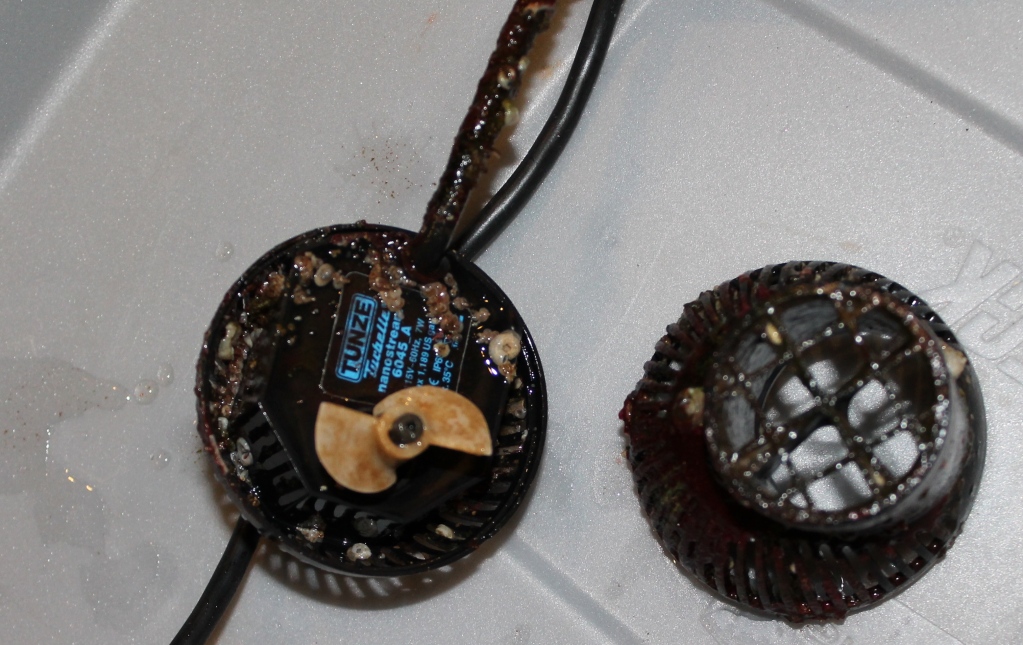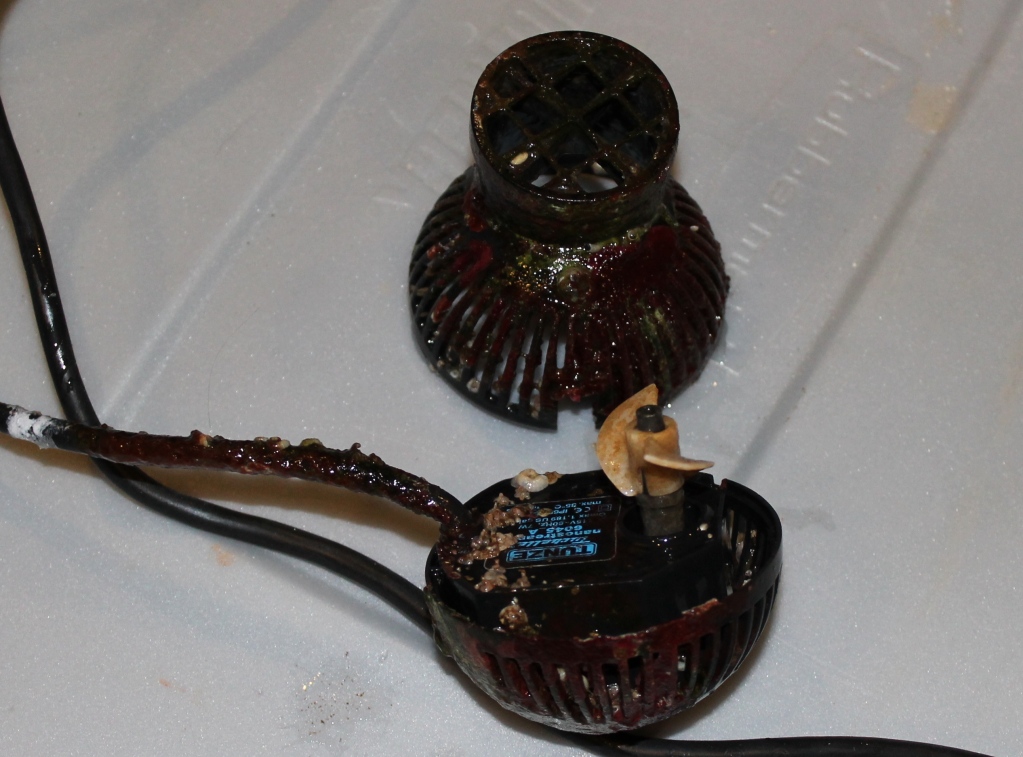
Old Tank Syndrome, Fact or Myth ?
Based on many people taking the time to document this and seeing the evidence they present, it sure dose present a compelling case for old tank syndrome. So why does this not happen to all aquariums?
One concept that some hobbyist don’t truly appreciate is that their aquarium is a closed system. Everything we add to it will stay in there (in one form or another) until we take it out. That statement is not limited to the obvious things like fish food. The subtle things are often over looked and will most likely be out of our thoughts and minds until it is too late, like top-up water as one example.
When evaporation occurs, only pure water will gas off and all the minerals that were in the water will remain. When adding replacement water to compensate for the evaporation you are also adding more minerals (if not using RO/DI water with 0 TDS). Over time this can add up eventually leading to changes in your system such as your pH for one example. As this process can even take many years to have an impact, your tank inhabitants will become acclimated to these changes along the way. This is why unexplained deaths of new fish and/or corals can consistently happen while the existing tank inhabitants seem to be acting normal and appear to be healthy. An appropriate water change schedule and using RO or RO/DI water will go a long water to prevent the buildup of minerals in your set-up. This potential risk is also directly linked to your water quality as well and actual impact over many years may vary.
The problems sometimes will start to happen when we obtain short term success with our aquariums and we are too busy patting ourselves on the back and miss these very little things that will add up to bigger problems overtime. But could this happen to you ?
The above is just one example or symptom of “Old Tank Syndrome” the below are also a few other symptoms that can be experienced:
1) Increasing nutrients (nitrates and phosphates). Some aquariums are simply not able to process and remove the nutrients that are produced or not enough water changes were completed to prevent this build-up. This lead to nutrients being absorbed into the rocks and substrate to later be released when/if the nutrient levels in the water become lowered. Correct and regular water changes combined with other forms of removing nutrients and proper maintenance of the substrate will help to prevent this.
2) Over feeding or incorrectly feeding the tank inhabitants. Although this obviously applies the feeding your fish, many hobbyist overfeed corals and filter feeders without even realizing it. When using foods like prepared phytoplankton, many people add the recommended amount for the whole tank instead of spot feeding. There will always be a little bit of this food that will not get consumed by using this approach. This extra food (over time) will cause a build-up of nutrients in the water. Frequent and consistent monitoring of nitrates and phosphates followed by making adjustments to the feedings when/if required will prevent this situation form happen. A good water change routine will also go a long way help prevent the bad effects this.
3) Coral Growth. No that’s not a typo. Many hobbyist do not look at stocking corals in a aquarium in the same way they would look at stocking fish. The coral grows to the point that it will affect the flow to other corals and some of the live rocks along with blocking out some light to any corals below. As a result, the other corals will die off which effects the water quality or defend themselves through releasing toxins into the water which will also have an effect on the water quality. If the growth of the coral will affect the flow, the tank will have reduced abilities to process nutrients having the same negative effects on the system’s water quality. The solution is simple, stock corals that can be in your tank even when they reach their maximum size, or corals that can be fragged if they start to get too big. Using a good quality carbon and having a good water change routine will also help.
4) Decreasing Alkalinity and/or Calcium. As the coralline algae and corals grow, they consume more and more alkalinity and calcium along the way. This can also be a very slow change over time. Seeing the coralline and corals growing gives us a feeling that we are doing a great job and we don’t test as much as we “know our tank” and everything appears normal. Over time the levels drop, very slowly and by small amounts, until it starts to affect the pH as well as other parameters. Frequent and consistent monitoring of the alkalinity and calcium levels followed by dosing supplements when/if required will prevent this situation form happen. A good water change routine with a good quality salt will also help prevent this.
5) Decreased flow from power heads and decreased skimmer efficiently. Over time, there will be a buildup of minerals and other stuff in and around the motors. This will lead to the equipment becoming more and more ineffective, which will have a negative effect on the overall water quality. Regular cleaning and maintenance of all equipment will always prevent this from happening. The below pics should the build up on some of my powerheads after 5 to 6 months in my 90 gallon reef tank. It can be shocking sometimes to see how quickly stuff can start to grow in and on your powerheads. They will get cleaned about 2 times a year now (at least) and the skimmer will get taken apart and cleaned at least once a year.


I had to learn about old tank syndrome the hard way. Many years ago, not too long after I started out in the hobby, I had a 33 gallon fresh water tank. After the first 6 or 8 months of this tank being set up, everything was going very well. I was proud of myself having cycled this tank and seeing it thrive. The fish and plants were growing and the weekly water parameter test results were always right where I liked them. It seemed like I had a good maintenance routine and a good water change schedule. After time, I only tested about every 2 or 3 weeks and then I thought I didn’t even need to test anymore as It’s always the same. The fish and plants continued growing, and I did not change a single thing with the set-up or my maintenance / water change routines. 1 to 1.5 years later we bought a new fish and slowly acclimated it to the tank. This fish hid in the plants and I found him dead a few days later. As all of the other fish were acting normal, I easily dismissed this as a case of adding a sick fish.
It was only then I decided to test my water to find a little less than 40ppm of nitrate in the water when it used to be around 10ppm. I even went to the store to buy a new nitrate test kit to make sure that result was correct. By not changing enough water, the nitrates slowly increased over time, however, my fish were able to adapt to it along the way. As I was not testing the nitrates regularly, I did not notice the build up so I did not see the need to make any changes. I was depending only on my visual observations of the tank to tell me when/if there was a problem. That approach may not always work to catch changes that take place slowly over time. After correcting the situation over two weeks, I noticed a big difference in how active the fish were and much better their coloring was. I will never make that mistake again.
In my opinion and in my experience, old tank syndrome is a myth. It is just a very polite way of stating or describing ineffective aquarium care and maintenance.
If you have any questions about this article, please feel free to start a thread in our forum using the below link. If you are not already a member, please take the time to sign up and join.
http://www.aquaticcommunity.com/aquariumforum/newthread.php?do=newthread&f=62
References:
http://saltwateraquariumadviseblog.com
http://www.advancedaquarist.com/2006/5/aafeature2
Just read your article on Old tank syndrome. Thanks for a great article. This is very informative and well written. I have a 12 year old tank (55 gallon), and totally agree with you. Sometimes we just need a reminder!
Thanks.
Janice
Great article – 7 years into this hobby and I have also learned the hard way. Some of the common methods taught to new reefers – for eg. quantity of live rock and the way it is aquascaped, deep sand beds – can have a long term negative effect on your system if not managed properly. You will however get a lovely tank out of it for a good 2-4 years before you begin to see problems. This can lead to the passing on of ‘what works for me’ to others well before the long term outcome has been reached.
I started with the wall of rock – which was effectively a major detritus trap – as it accumulated between and directly under the rocks. Dollars were spent on increasing flow, which helped some, before I figured out my live rock needed a second look. If you’ve ever seen a tank being dismantled and the water turn to mud you will know what I mean.
I’m glad to read that you like the article